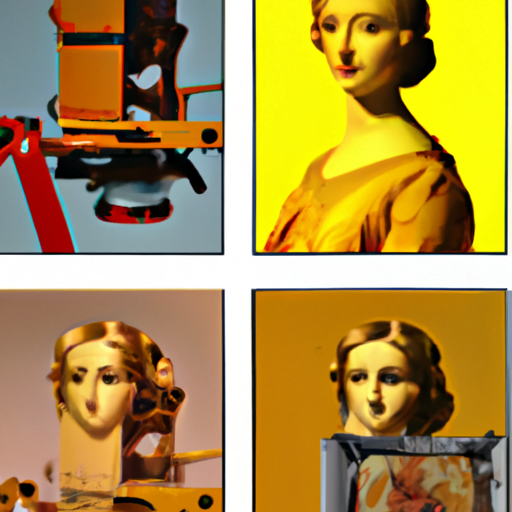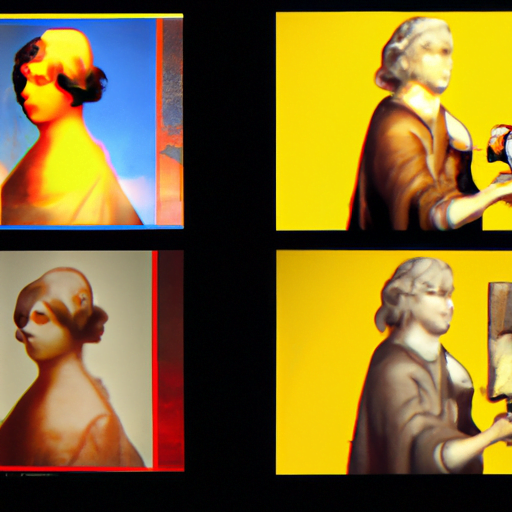
-
Table of Contents
The Evolution of AI in Art Restoration and Conservation

Art restoration and conservation have long been essential practices in preserving and maintaining the world’s cultural heritage. Over the years, advancements in technology have played a significant role in enhancing these processes. One such technological advancement that has revolutionized the field is Artificial Intelligence (AI). In recent years, AI has emerged as a powerful tool in art restoration and conservation, enabling experts to analyze, restore, and preserve artworks with unprecedented precision and efficiency.
The Role of AI in Art Restoration
Art restoration involves the careful examination, cleaning, repair, and preservation of artworks to maintain their original aesthetic and historical value. Traditionally, this process has relied heavily on the expertise of human conservators, who meticulously analyze and restore artworks using their knowledge and experience. However, AI has introduced new possibilities and capabilities to this field.
One of the primary applications of AI in art restoration is the analysis of artworks. AI algorithms can analyze images of artworks to identify and categorize various elements such as brushstrokes, colors, and textures. This analysis helps conservators gain a deeper understanding of the artist’s techniques and materials used, aiding in the restoration process.
AI can also assist in the cleaning and repair of artworks. For example, AI algorithms can automatically remove dirt, stains, and other imperfections from digital images of artworks, providing conservators with a clearer view of the original piece. Additionally, AI-powered robots can perform delicate cleaning tasks on physical artworks, minimizing the risk of damage.
Case Study: The Restoration of “The Night Watch” by Rembrandt
An excellent example of AI’s impact on art restoration is the restoration of Rembrandt’s masterpiece, “The Night Watch.” The painting, which had suffered from deterioration over the years, underwent a comprehensive restoration process that involved the use of AI technology.
During the restoration, high-resolution images of the painting were captured and analyzed using AI algorithms. These algorithms identified areas of damage, such as cracks and discoloration, and provided valuable insights to the conservators. The AI analysis helped guide the restoration process, ensuring that the original intent of the artist was preserved while addressing the damages.
Furthermore, AI algorithms were used to digitally reconstruct missing parts of the painting. By analyzing the existing brushstrokes and patterns, the AI system generated accurate representations of the missing sections. This digital reconstruction served as a reference for the conservators during the physical restoration, enabling them to recreate the original composition.
The Advantages of AI in Art Conservation
The integration of AI in art restoration and conservation offers several advantages over traditional methods. Some of these advantages include:
- Efficiency: AI algorithms can analyze and process vast amounts of data in a fraction of the time it would take a human conservator. This significantly speeds up the restoration process, allowing for the preservation of more artworks in a shorter period.
- Precision: AI algorithms can detect and analyze minute details that may be missed by the human eye. This level of precision ensures that the restoration process is accurate and faithful to the original artwork.
- Consistency: AI algorithms can be trained to follow specific guidelines and standards consistently. This ensures that the restoration process is carried out uniformly across different artworks, maintaining a high level of quality and consistency.
- Accessibility: AI technology can be made accessible to a broader audience, including smaller museums and institutions with limited resources. This democratization of art restoration and conservation allows for the preservation of cultural heritage on a global scale.
The Future of AI in Art Restoration and Conservation
The potential of AI in art restoration and conservation is vast, and ongoing research and development continue to push the boundaries of what is possible. Some areas where AI is expected to make significant contributions in the future include:
- Automated Analysis: AI algorithms will become even more sophisticated in analyzing and categorizing artworks, providing conservators with detailed insights into the artist’s techniques, materials, and historical context.
- Virtual Restoration: AI technology will enable the virtual restoration of artworks, allowing viewers to experience the original appearance of a piece without physically altering it. This can be particularly useful for fragile or highly deteriorated artworks.
- Preservation Planning: AI algorithms can help conservators develop long-term preservation plans for artworks by predicting potential deterioration and recommending preventive measures.
- Collaborative Restoration: AI systems can facilitate collaboration between conservators from different locations, allowing them to work together on the restoration of artworks remotely. This opens up opportunities for knowledge sharing and expertise exchange.
Summary
Art restoration and conservation have entered a new era with the integration of AI technology. The ability of AI algorithms to analyze, restore, and preserve artworks with precision and efficiency has revolutionized the field. Through case studies like the restoration of “The Night Watch” by Rembrandt, we have seen how AI can enhance the restoration process by providing valuable insights and aiding in the reconstruction of missing parts. The advantages of AI, including efficiency, precision, consistency, and accessibility, make it an invaluable tool in preserving our cultural heritage. As research and development in AI continue to progress, we can expect even more exciting advancements in the future, such as automated analysis, virtual restoration, preservation planning, and collaborative restoration. With AI’s assistance, art restoration and conservation will continue to thrive, ensuring that our cultural treasures are preserved for generations to come.
